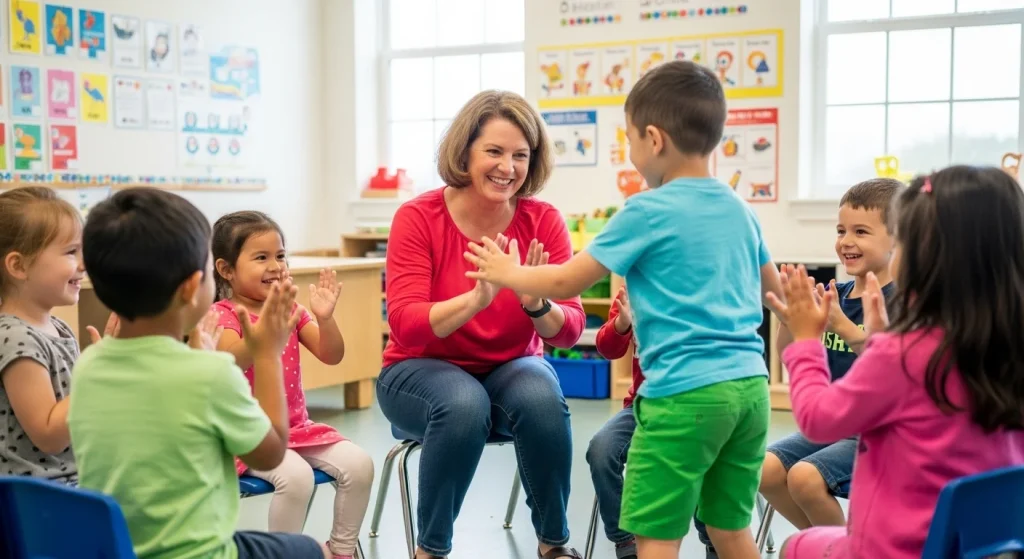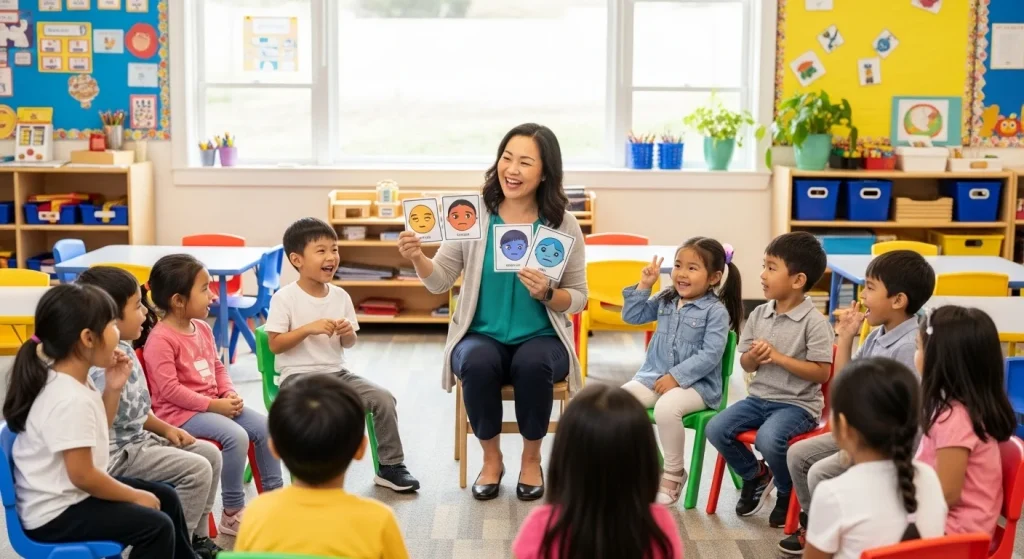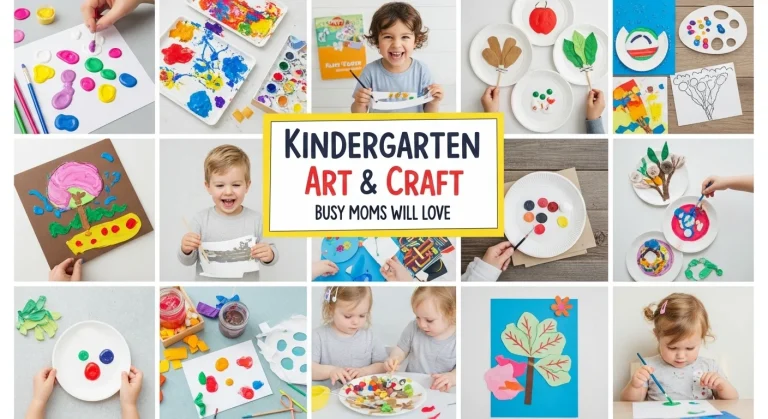10 Magical Circle Time Games Every Kindergarten Teacher Will Love
Introduction
Feeling overwhelmed trying to keep your kindergarten circle time engaging? Ever worry your students are tuning out instead of joining in?
You’re not alone. Every early educator has been there — sitting in front of a squirming group of five-year-olds, trying to hold their attention longer than a few minutes. But here’s the truth: circle time doesn’t have to be a struggle. It can actually become the most anticipated part of the day with the right set of engaging, meaningful, and developmentally-appropriate games.
In this guide, you’ll discover the top kindergarten circle time games every teacher should know — games that inspire joy, boost listening skills, build routines, and encourage positive peer interaction. Whether you’re a new teacher or a seasoned pro looking to refresh your toolkit, these ideas are low-prep, high-impact, and most importantly — kid-approved.

Let’s turn circle time into magic time!
1. What’s Missing?
Place 3–5 familiar classroom items in the middle of the circle. Give students a few seconds to observe, then have them close their eyes. Remove one item quietly and ask: “What’s missing?”
Why it works: Builds memory, focus, and visual discrimination.
Pro Tip: Rotate items by theme — animals, shapes, numbers — to integrate with current lessons.

2. Pass the Clap
Start by clapping once and looking to your left. That student then claps and turns to their neighbor, and so on. Speed it up once they get the hang of it!
Why it works: Encourages rhythm, active listening, and group cooperation.
Level Up: Try other actions — like pass the smile, pass the wiggle, or pass the word.

3. Mystery Sound
Hide a noisemaker (like a shaker, bell, or rattle) inside a box or behind a curtain. Let students guess the sound after hearing it once.
Why it works: Sharpens auditory skills, vocabulary, and inference.
Variation: Let students take turns being the mystery sound master.
4. Name That Emotion
Hold up emotion cards or make faces. Ask students to name the emotion, then share a time they felt that way.
Why it works: Builds emotional literacy and social-emotional learning.
Make it Engaging: Use mirrors or emojis to make guessing fun.

5. Weather Reporter
Choose a “weather reporter of the day.” They step up, use toy props (microphone, map, sunglasses) and report on the weather using complete sentences.
Why it works: Builds confidence, public speaking, and sentence structure.
Bonus: Tie it into calendar time or morning routines.

6. Count Around the Circle
Start counting from 1 and go around the circle — each child says one number. Add challenges like skip counting or going backward.
Why it works: Reinforces number sequencing and builds math fluency.
Advanced Version: Use themes — count animals, foods, or classroom objects.

7. Silly Simon Says
A classic with a twist. Use silly commands like “Simon says jump like jelly,” “Simon says whisper your name,” or “Pat your knees with your eyes closed.”
Why it works: Builds listening, body control, and encourages laughter.
Pro Tip: Great brain break after lessons or transitions.

8. The Compliment Train
Each child turns to the person next to them and gives one kind compliment. Start with a few modeled examples.
Why it works: Builds a positive classroom community and empathy.
Make it Daily: Add it to your weekly SEL routine.

9. Days of the Week Song & Dance
Turn routine learning into fun by adding movement to the calendar. Sing “Days of the Week” while clapping, stomping, or spinning.
Why it works: Combines music, movement, and calendar skills.
Upgrade: Let kids invent their own moves.

10. I Spy With a Twist
“I spy something that rhymes with…” or “I spy something that starts with the letter B.” Add colors, shapes, or themes.
Why it works: Reinforces phonics, colors, critical thinking, and observational skills.
Engagement Tip: Use seasonal or classroom themes.

Before we dive into why these games matter, you might also enjoy exploring this helpful list of these fun summer craft ideas for kids.
Why Circle Time Games Matter in Kindergarten
You may think games are just fun fillers — but in early childhood education, they’re far more than that.
Circle time activities support:
- Cognitive development: through memory, problem-solving, and pattern recognition
- Social skills: by encouraging turn-taking, cooperation, and empathy
- Emotional regulation: by helping children express and manage feelings
- Language growth: by building vocabulary and expressive language
When used intentionally, these games set the stage for focused learning, positive behavior, and strong peer relationships.

How to Maximize Engagement During Circle Time
Circle time isn’t just what you do — it’s how you lead it.
🔹 Keep sessions short
Aim for 10–15 minutes max for young learners. If kids are restless, cut it down.
🔹 Use consistent routines
Begin and end with familiar songs or rituals.
🔹 Include all learners
Rotate who leads games. Include movement, music, visuals, and props.
🔹 Celebrate participation
A simple “great listening” or a sticker on a chart can reinforce engagement.
Sample Circle Time Schedule
If you’re wondering how to fit it all in, here’s a daily structure:
- Greeting Song (1–2 mins)
- Calendar & Weather (3 mins)
- Circle Time Game (5–7 mins)
- Read-Aloud or Poem (5 mins)
- Closing Song (1–2 mins)
Keep it simple, consistent, and joyful. Your students will look forward to it every single day.

Final Thoughts
Circle time is more than just a moment in the day — it’s a powerful opportunity to connect, teach, and inspire. The right games bring laughter, build trust, and open the door to deep, joyful learning.
When you walk into class tomorrow, armed with these kindergarten circle time games every teacher should know, you won’t just be hoping for attention — you’ll be earning it, one smile and giggle at a time.
You’ve got this, teacher friend. Make that circle shine!







